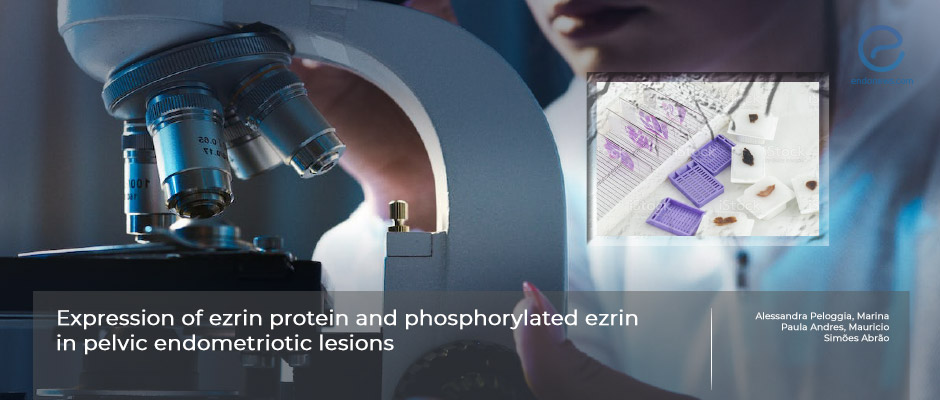Organizing structural protein Ezrin and its active form in endometriosis biopsies
Oct 25, 2022
New kids on the block : Ezrin and Phospho-Ezrin may be involved in endometriosis pathogenesis
Key Points
Highlights:
- The most important essential step for ectopic endometrial cells to implant and grow, depends on cell-to-cell or cell-to-extracellular matrix interaction.
- Ezrin is a 'receptor-organizing structural protein' that interacts with cellular adhesion molecules following activation by phosphorylation.
- The possible role of 'Ezrin' and its active form "Phospho-Ezrin" on endometriosis pathogenesis has not been cleared yet.
Importance:
- Though a considerable body of research is present in endometriosis, mechanisms related to the migration and attachment of endometrial tissues are still not precise.
What's done here:
- This is a retrospective study conducted on endometriosis tissues from women (n = 57) who underwent laparoscopy in a two-year period.
- The light microscopic expression of "Ezrin' and its active form "Phosphorylated Ezrin' proteins were analyzed by immunostaining.
Key Results:
- The expression of both Ezrin and Phospho Ezrin in all endometriosis biopsies yields evidence that these molecules are important in explaining the migration and attachment of endometrial implants.
- Interestingly, an inversely proportional relationship between severe dyschezia and the intensity of Ezrin was observed, showing weak staining in two-thirds of endometriosis samples.
- Further research with different types of lesions and eutopic endometrium is needed to elucidate the exact roles of these molecules.
Lay Summary
Dr. Alessandra Peloggia and colleagues from Brazil have published their results on immunostaining of Ezrin protein and its phosphorylated active form in endometrial tissues in a recent issue of “Clinics”
Possible factors on endometrial cell implantation and proliferation in the pelvic cavity have been discussed extensively in research projects. However, there has been limited discussion regarding Ezrin and its active form Phospho-Ezrin in this regard.
The authors aimed to assess the expression of Ezrin and its active form Phospho-Ezrin in endometriosis, and its relation to the menstrual cycle phase, stage of endometriosis, histological grouping, and clinical symptoms.
The study included 57 women aged 18‒45 years with biopsy-confirmed endometriosis, without hormonal treatment for three months prior to the laparoscopy. The microscopic expression of both Ezrin and Phospho-Ezrin was assessed by immunostaining.
All the endometriosis tissues revealed Ezrin in the glands, being 7 (12.3%) weak intensity, 30 (52.6%) moderate intensity, and 20 (35.1%) strong intensity. Phospho-Ezrin was expressed in the stroma of all endometriosis tissues, 9 (15.8%) with weak intensity, 45 (78.9%) with moderate, and 3 (5.3%) with strong intensity. There was an inversely proportional relationship between severe dyschezia and the intensity of Ezrin, showing weak staining in 66.7%.
Ezrin and Phospho-Ezrin proteins are important markers in the pathogenesis of migration and attachment of endometriosis. However, it is still unclear whether they are causative factors or consequences of endometriosis. New research data with different types of lesions and eutopic endometrium are needed to understand the exact roles of these molecules.
Research Source: https://pubmed.ncbi.nlm.nih.gov/35793608/
Ezrin Phospho-Ezrin endometriosis pathogenesis immunostaining biopsy laparoscopy

